By Cecille Jones, Monroe Master Gardener Volunteer
This article appeared in the December 2020 / January 2021 Issue of Gardening in Orange County.
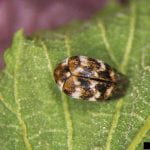
Carpet beetles (Family Dermestidae) also know as dermestid beetles are a common household pest. Because they can cause damage to carpets, coats, blankets and even taxidermy mounts, you definitely do not want these pests in your home.
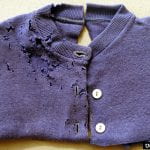
The damage caused by these pests is often mistaken for that of clothes moths. Watch out for threadbare spots and irregular holes in your wool, fur, felt, silk, feathers and leather items. Cotton and synthetic fabrics such as polyester and rayon are rarely attacked unless they’re blended with wool or are heavily soiled with food stains or body oils.
But we are not done yet, although many species feed on animal based products, there are also several species that are considered pantry pests and will feed on dry food products such as milk powder, spices, seeds, and grains.
Carpet Beetle Lifecycle

Carpet beetles enter your home by hitching rides on cut flowers, clothing or pets. They also can simply fly through open windows and doors. In the springtime, keep an eye on your windowsills – this is where they often appear.
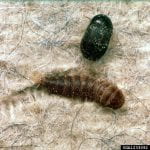
Once inside your home, female beetles lay between 50 to 100 eggs. In a couple weeks, the eggs hatch into worm like larvae. Larvae measure from ⅛ to ¼ inch long, tan or brownish in color, slow moving and densely covered with hair or bristles.
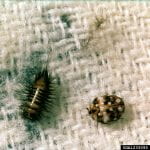
The larval stage is the damaging life stage. Many species of carpet beetles feed on things of animal origin (i.e. hide, fur, feathers, leather, wool, dead insects, etc.), while other species are pantry pests and feed on dry food products (i.e. flour, spices, nuts, grains, pasta, cereal, etc.). Depending on the species and the conditions in which they live (i..e. temperature, food source, etc.), they will feed from anywhere between three months and two years, before pupating. A few weeks after pupation, they emerge as adults. The adults are not considered pests and can be found out in your garden eating pollen from various flowers.
Management
To prevent an infestation, dry clean or launder susceptible items before storing them. This will kill eggs or larvae as well as remove odors that attract these pests. Storing susceptible items in air tight containers will also keep these damaging pests away. Routine and thorough vacuuming is helpful in eliminating an infestation. As a supplement to good housekeeping, you can monitor for carpet beetles using baited or non-baited glue traps.
Fun Facts
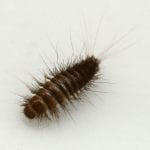
Although carpet beetles probably won’t bite you, the hairs on the larvae can cause can cause an allergic reaction producing large, itchy red welts.
Carpet beetles are the bane of many insect collectors as they will feed on dried insect specimens reducing beautifully pinned specimens into a pile of dust.
Resources
Carpet Beetles – University of Kentucky
Carpet Beetles in Kindergarten – Northeastern IPM Center
When preschool and kindergarten students started getting large, itchy welts on their legs, and an investigation determined that the culprit was carpet beetle larvae on the new, natural-fiber carpets that school had purchased for its classrooms.
Dermestid Beetles (Carpet Beetles) – Colorado State University Extension
